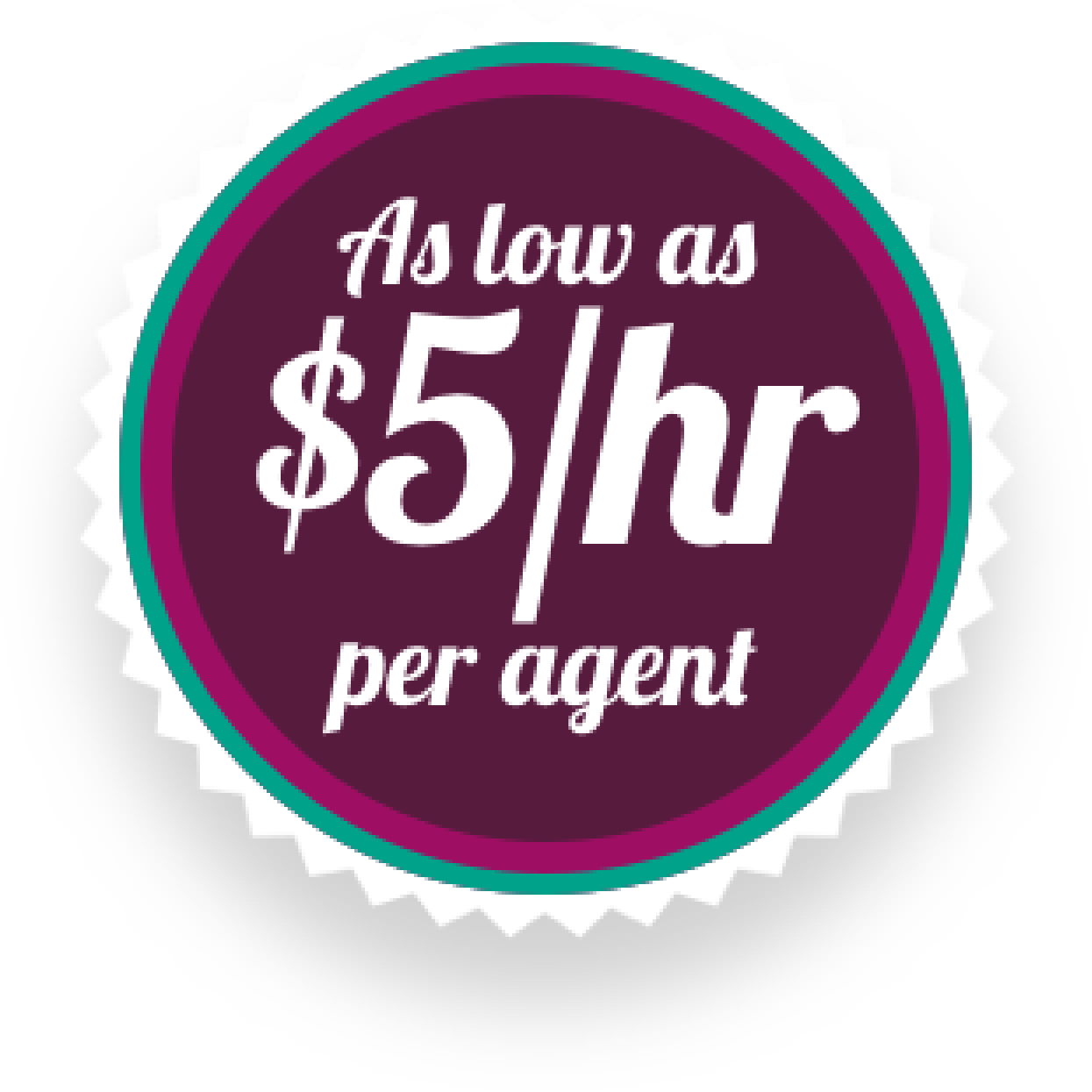Cold calling is dead yet most businesses rely on calling to increase the number of prospects, appointments, and sales. Both clauses do not match each other. Before you dive into the telephoning tips, it is very important to agree on the reality of calling.
A long list of statistics says calling is still alive and one of the most effective ways to generate leads for any business. And at the same time, there is also a long list of statistics that say telephoning is dead. In an unbiased sense, the right statement would be calling is alive and among the most effective ways to generate leads, but only if done right. There are statistics to back this claim also.
In this post, we will discuss what cold calling is, 21 calling tips to keep prospects on the phone and increase sales, and frequently asked questions on a phone call, such as what is the success rate of calling, do telephoning really work, and what is the role of data in telephoning.
What is Cold Calling?
Cold calling is the process of making contact with prospects who have not previously expressed interest in the company’s product or solutions. An SDR or cold caller reaches the prospect over the phone. It is one of the most effective lead generation methods used by businesses across the globe to expand their business.

Cold calling is different from the other prospecting methods in the fact that you get instant feedback from the prospect with it. You do not have to wait for hours to get a reply like an email or message on social media. This highly proactive approach makes calling intimidating in nature, but with the right approach and mindset, you can create a lasting impact on the prospects and flow a substantial number of leads to your sales pipeline. Let’s find out how to do the calling right.
21 Cold Caller Tips to keep Prospects on the Phone and Increase Sales
1. Know Your Prospects First
The first thing any outbound SDR or cold caller needs to do is know the prospect before picking up the phone. If you have high-quality cold caller data, you are provided with things like the prospect’s name, company information, and social media profile. Now, rather than just shooting your sales pitch and bragging about your company’s product or services, it is your responsibility to know your prospect first.
Have a thorough look at the prospect’s profile, company website, and recent social media activity. This will help you prepare for your cold call, personalize your cold call, and add value to it. You can easily comprehend what your prospect is saying if you have some prior understanding of the prospect’s needs. The ability to understand what your prospects are saying is the feature of a good call.
2. Know How Your Solutions Can Benefit Prospect
You cannot be confident in a cold call if you do not know how you can help your prospect. Therefore, it is very important for a caller or an outbound SDR to thoroughly understand the company’s offerings. The most embarrassing situation for a cold caller is not being able to respond to a prospect’s queries related to the company’s solutions.
82% of B2B decision makers think sales reps are unprepared. When you research the prospect’s profile, you get a rough idea about how your company’s solutions can benefit your prospect. There are two things you need for that: first, an in-depth understanding of the company’s offering, and second, how it can help your prospect.
3. Understand Your Prospect’s Need
The definition of calling says it is the process of making contact with a prospect in order to sell your services. But actually, on the ground, it is the opposite. You do make contact, but not to speak. It is to listen. You have some idea of what your prospect is looking for and some idea of what you have to offer. The cold call is an attempt to figure out what your prospect is looking for and how your company’s solutions can cater to them.
The old method of spray and praying does not work anymore. If you want your call to be effective, listen to the prospect’s needs and figure out whether or not the prospect is an ideal fit for your company’s product or solution. The goal of the first telephoning is not to sell but to build a connection that will lead to further interaction with your company.
4. Find the Right Time to Make a Call
It is no secret that cold calls are annoying, but why make them more annoying? One of the most common mistakes many outbound SDRs or sales professionals make is talking to prospects at the wrong time.
First, every cold caller should develop a habit of asking the prospect about the right time to talk because no one likes getting interrupted when in the middle of something. And second, it is very important to make the call at the right time.
If you think Monday morning is the best time to talk to your prospects, well it is not. A sales call is the last thing any working professional would be expecting on a Monday morning. By calling prospects at the wrong time, you can easily annoy them and reduce your chances of securing an appointment. Therefore, it is very important to find a better time to call.
You can perform a little research and find out the right time and right time to reach out to your prospects. For example, a sales call on a Monday at noon sounds more reasonable than an early morning call unless requested.
Statistics confirm that the last hour of the workday (between 4 PM and 5 PM) is a good time to reach prospects and Wednesday and Thursday are the best days of the week to call prospects.
5. Patience and Persistence are Key to Cold Calling
There are a few statistics that will show you why some sales professionals excel at telephoning and why some lack it.
- It takes on an average of 18 calls to reach one potential buyer.
- 92% of salespeople give up on a prospect after receiving four “no’s.” However, 80% of prospects say “no” four times before they say “yes.”.
- 44% of sales representatives stop with sales follow-up after the first call.
- It requires an average of five successful follow-up calls to close a deal after a salesperson has reached the prospect.
Thus, you can easily see that patience and persistence is the key to telephoning. When you are making cold calls, you do not expect your prospect to turn into a customer straightaway. You have to go through many times asked to leave a message, face rejections to schedule an appointment, and much more. There is no need to take the rejections personally. If you give up too early, you may lose golden opportunities.
6. Make a Cold Call Script to Keep You Organized
63% of sales representatives say that cold calls are the worst part of their job. It is not difficult to predict why it is so, but that’s where you need to excel. Among the best tips for a cold caller is to make a cold call script. Now, there are two things in it: first, to understand the importance of the cold call script, and second, mistakes you should avoid.
A good cold call script includes a few key elements: a clear list of steps to take during cold calls, suggestions on dealing with sales objections, and tips on handling rude prospects or unexpected scenarios. A cold call script is quite helpful, especially when you are a newbie.
Now the mistake you need to avoid is reading directly from your telephoning script word to word. This is the worst mistake a cold caller can make. Prospects do not want to talk to the robot. The purpose of the cold call is to establish a connection. Use the script as a helpful checklist of the things you want to deliver on a cold call rather than a pre-recorded message.
7. Be Ready For the Questions
82% of buyers say they have accepted meetings with salespeople after a series of contacts beginning with sales cold calls, and 88% of B2B buyers only buy when they see a salesperson as a “Trusted Advisor”. Thus, there are a lot of questions answering you need to do.
You do not have to be a product expert. A specialist inbound SDR will take the buyer through the product demo, but you should be prepared to answer the common questions asked by the prospect.
A cold call is more of a discovery call where you ask questions to prospects to understand their needs and a prospect asks questions to find out whether or not your company’s products or services are valuable to them. This initial cold call lays the basis for the sales team to represent the company’s solutions to the buyer later.
8. Choose the Right Opening Statement
Cold calls can be intimidating. The only way to make it less intimidating is to choose the right words and an opening statement. Your opening statement can open a door for a discussion with a prospect or close it. There are a few opening statements that you can use to increase the likelihood of getting the conversation going.
For example, phrases like “How are you?” or some version of it can increase the chances of booking a follow-up meeting by 3.4 times. The phrase “How have you been?” along with the personalization increases your success rate by 6.6 times. Similarly, salespeople who state their reason for calling have a 2.1x higher success rate.
These are some of the basic cold-calling etiquettes you can follow. This increases your likelihood of securing an appointment with the prospect and helps you create a positive impact on the prospect.
9. Pay attention to the Words You Are Using
Words matter a lot. Cold caller involves the human touch in the form of voice, which is not present in the email or contacting someone on social media. Therefore, what you are saying and how you are saying it, both play a key role when you are calling a prospect over a phone. There are certain words that you can add to your cold call script to make it more effective.
For example, successful cold calls include 65% more “we” statements. Similarly, asking “Is now a bad time?” rather than “Is it a good time to talk?” on a cold call makes you 40% less likely to book a meeting.
Try to avoid using negative words. Instead of saying “I am not sure” use “I will find out”. The prospect is not going to ask advanced queries. Even if your prospect asks questions that you are not sure about, you can assure the prospect to get back. Make sure you call back and sound confident in your cold calls.
10. Keep the Sales Pitch For the End
The purpose of a cold call is not to make a sale. It is to find out the needs of the prospect. Though, every prospect needs a sales pitch that will encourage the prospect to further schedule a meeting. There is an art to using a sales pitch in a cold call. You do not use your sales pitch at the beginning of the cold call or when a prospect is still knowing your offerings. You need to keep your sales pitch for the end. Not at the end of a cold call, but at the end of the discussion where a prospect further needs guidance on what to do.

During the initial calls, anyways you are not going to use your well-scripted sales pitch. It is just you will find ways to build a connection with the prospect. It is when your prospect trusts you for the information, you use a sales pitch.
11. Build a connection with open-ended questions
There are two ways to ask a question in a cold call: first is the dead-end question where you are only going to get an answer in a yes or no, and second is the open-ended question where you are going to get a little detailed explanation from the prospect.
Here is an example of how you can ask the same question in two different ways:
Are you interested in our product or services?
What are the top priorities of your company right now?
The first question is a dead-end question where you get an answer of yes or no, whereas the second question is an open end question where you get an explanation.
Open-ended questions often begin with keywords such as “what,” “why,” or “how.” When the purpose of the call is to discover needs, use open-ended questions, whilst when the purpose of the call is to find clarity about the client’s interest, you can use the close-ended question. You need the right mix of questions to make your cold call successful.
12. Outlines what you want to discuss
The best way to make a cold call easy is to outline your agenda for the cold call on paper. You can keep it as a note when making a cold call. What it will do is it will help you calm your nerves and guide the conversation so you stay focused on the goal of the call. It also helps you better listen to the prospects and respond to the prospects’ queries because you know exactly what your goal is.
You can also keep the pen and paper along with you while making a cold call to note down the key points of the call or note down the things you want to talk about while making a call back to your prospect to follow-up.
13. Practice cold calls before dialing
You become good at what you practice. This is the best thing you can do to become an effective cold caller. The last thing you want during a cold call is to fumble or get anxious about what to say next. Go over your outline many times, make clear your goal in front of your mind, and practice your strategy again and again for a cold call. When you have enough practice down the line and you are mentally prepared to tackle any type of prospect, you can stay relaxed during the call. You can ask your manager or executive to play the role of a tough prospect to better prepare for the call.
14. Keep your call short and crisp
It is very important to respect the time of the prospect. Experts always recommend keeping your call short and crisp. Cold calling is not welcomed by most prospects. You need to be precise, accurate, and upfront about the purpose of the call. Salespeople who state their reason for calling have a 2.1x higher success rate, and win rates are 10% higher when pricing is discussed on the first call. If your prospect is interested in knowing more, you can get into details.
15. Do not push the prospect
Persistence is the key, but there is a fine line between being persistent and a nuisance. Many times prospects do not have the time to listen to your product or services, but they have the need. If your prospect is not available currently and asks you to make a call back later, do not push the prospect to stay on the call. This will add to the frustration. Make a second call attempt at the preferred time of the prospect, or if required, third, fourth or more attempts.
16. Learn to deal with rejections
You are not going to hear yes on your first cold call in most of the scenarios. Cold calling has a success rate of 1 to 3%. You need to prepare yourself for rejection. The most common sales objections include “the product being too expensive” or “I don’t need this product right now”. You are not going to close every deal. Learn to take a ‘no’ for a no, and move on to another prospect.
17. Leave a Voicemail
92% of consumers think unidentified calls might be a fraud. 79% of unidentified calls go unanswered. 87% of respondents said they do not answer calls from unknown numbers in a recent survey. This simply means some people simply do not respond to the calls from the unknown number. Thus, build a habit of leaving a voicemail with the prospects who do not pick up your cold call.
You can create a simple voicemail message specifying your name, company, the reason for calling, and your phone number. According to Hubspot, the best length for voice messages is between 20 and 30 seconds. Make sure your voicemail is not a big one.
18. Try to find a common connection
Mentioning a common connection during a cold call can increase the likelihood of attaining a meeting by 70%. You can do that by following the social media of the prospect. You can even like your prospect’s posts or genuinely comment to build a common connection. Or you can talk about the press release or ads published by the prospect to find a common connection.
19. Provide information over email when requested
Prospect is your king in the calling. You cannot deny the information if your prospect is asking it over email, but it is also true, many prospects use this as a method to end the call. Provide information over email only when requested. Prefer scheduling a callback. You can ask your prospect for a preferred time for a call back along with sharing the information over email.
20. Automate your daily repetitive tasks
Follow-up plays a key role in effective cold calling. There is a lot on the plate for an outbound SDR or cold caller to manage. Use the advanced CRM tools to set reminders of the follow-up and automate other daily repetitive tasks. This helps you improve your productivity and better target your prospects.
21. Analyze and evaluate your cold calls
This is one of the best practices you can adopt to excel at cold calling. Analyze your most successful and complete failure cold calls. This will help you find out the areas you need to work. If you need assistance with a particular area, you can contact your manager or mentor to find a solution for it.
Frequently Asked Questions on Cold Calling
1. What is the success rate of cold calling?
A good success rate of calling falls from 1 to 3%, but it does not mean calling is not effective. 57% of C-level buyers prefer to be contacted by phone, and 82% of buyers accept meeting with sellers who calling .
2. Does cold calling really work?
Yes, cold calling works when done right. 69% of buyers report accepting one or more cold calls during 2019. Of buyers who accept sales calls, 75% reported interest in the product as the most important reason.
3. What is the role of data in cold calling?
Data plays a vital role in the success of cold calling. Inaccurate B2B contact data wastes 27.3% of sales reps’ time. It has a direct impact on the bottom line of 88% of businesses, with the average company losing 12% of its revenue as a result of inaccurate data. Bad data costs U.S. businesses more than $611 billion each year.
4. Is it a good idea to outsource cold calling?
Yes, it is a great idea to outsource cold caller. You do not have to manage an in-house team, provide training, manage salaries, develop infrastructure or manage taxes when you outsource calling.
5. What is the difference between cold calling and warm calling?
A cold caller is when you make a contact with a prospect who does not express interest in your company’s product or services. A warm call is when you make a contact with a prospect who has expressed some sort of interest in a company’s product or services in a brand or marketing campaign.
Hire GetCallers Cold Callers for Effective Lead Generation
GetCallers is a professional source for quality, affordable remote virtual assistants and callers. GetCallers cold callers are trusted by more than 800+ companies. You have more than 2600 reviews online to find out how good its callers are.
GetCallers is a pioneer in call center services. It provides business outsourcing across a range of services for global organizations. Remote callers become a cohesive team throughout the internet. You can quickly achieve 10x growth for your business by assigning specific tasks to GetCallers assistants to call centers. The top industries served are Real Estate, Insurance, Finance, Medical, Mortgage, Credit, Home Maintenance, and more. Hire professional cold callers starting from $5 per agent per hour.


